Niklas Goby
Integrating Human Knowledge Through Action Masking in Reinforcement Learning for Operations Research
Apr 03, 2025Abstract:Reinforcement learning (RL) provides a powerful method to address problems in operations research. However, its real-world application often fails due to a lack of user acceptance and trust. A possible remedy is to provide managers with the possibility of altering the RL policy by incorporating human expert knowledge. In this study, we analyze the benefits and caveats of including human knowledge via action masking. While action masking has so far been used to exclude invalid actions, its ability to integrate human expertise remains underexplored. Human knowledge is often encapsulated in heuristics, which suggest reasonable, near-optimal actions in certain situations. Enforcing such actions should hence increase trust among the human workforce to rely on the model's decisions. Yet, a strict enforcement of heuristic actions may also restrict the policy from exploring superior actions, thereby leading to overall lower performance. We analyze the effects of action masking based on three problems with different characteristics, namely, paint shop scheduling, peak load management, and inventory management. Our findings demonstrate that incorporating human knowledge through action masking can achieve substantial improvements over policies trained without action masking. In addition, we find that action masking is crucial for learning effective policies in constrained action spaces, where certain actions can only be performed a limited number of times. Finally, we highlight the potential for suboptimal outcomes when action masks are overly restrictive.
Distributed traffic light control at uncoupled intersections with real-world topology by deep reinforcement learning
Nov 27, 2018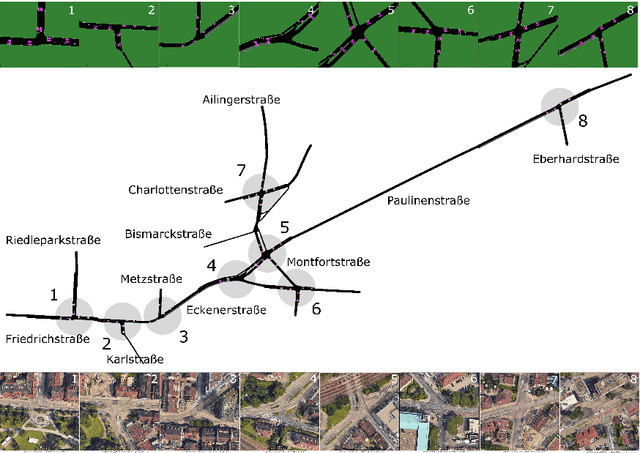
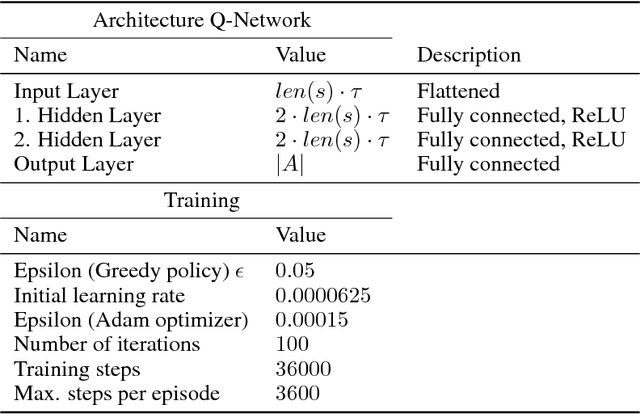
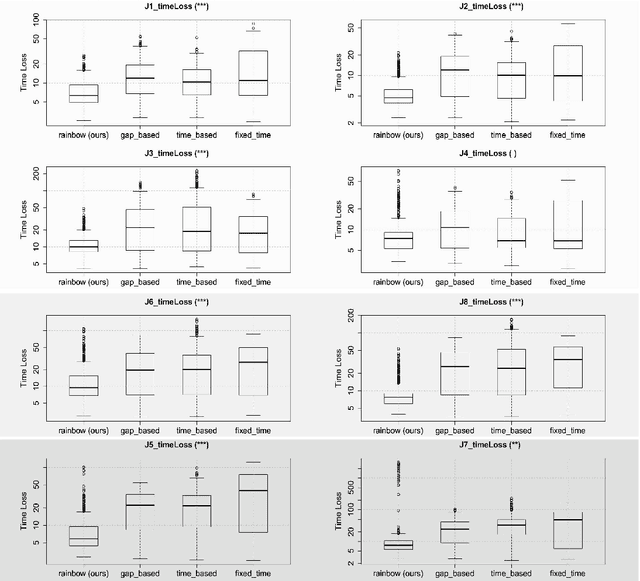
Abstract:This work examines the implications of uncoupled intersections with local real-world topology and sensor setup on traffic light control approaches. Control approaches are evaluated with respect to: Traffic flow, fuel consumption and noise emission at intersections. The real-world road network of Friedrichshafen is depicted, preprocessed and the present traffic light controlled intersections are modeled with respect to state space and action space. Different strategies, containing fixed-time, gap-based and time-based control approaches as well as our deep reinforcement learning based control approach, are implemented and assessed. Our novel DRL approach allows for modeling the TLC action space, with respect to phase selection as well as selection of transition timings. It was found that real-world topologies, and thus irregularly arranged intersections have an influence on the performance of traffic light control approaches. This is even to be observed within the same intersection types (n-arm, m-phases). Moreover we could show, that these influences can be efficiently dealt with by our deep reinforcement learning based control approach.
Transfer Learning versus Multi-agent Learning regarding Distributed Decision-Making in Highway Traffic
Oct 19, 2018
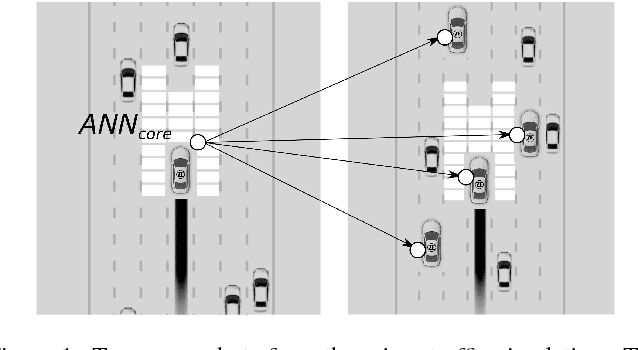
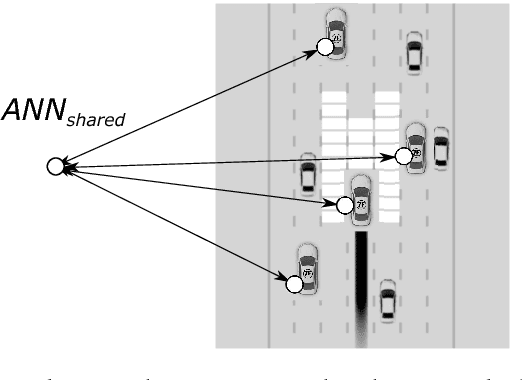
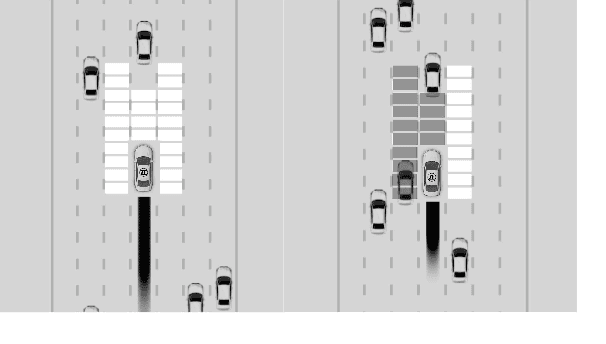
Abstract:Transportation and traffic are currently undergoing a rapid increase in terms of both scale and complexity. At the same time, an increasing share of traffic participants are being transformed into agents driven or supported by artificial intelligence resulting in mixed-intelligence traffic. This work explores the implications of distributed decision-making in mixed-intelligence traffic. The investigations are carried out on the basis of an online-simulated highway scenario, namely the MIT \emph{DeepTraffic} simulation. In the first step traffic agents are trained by means of a deep reinforcement learning approach, being deployed inside an elitist evolutionary algorithm for hyperparameter search. The resulting architectures and training parameters are then utilized in order to either train a single autonomous traffic agent and transfer the learned weights onto a multi-agent scenario or else to conduct multi-agent learning directly. Both learning strategies are evaluated on different ratios of mixed-intelligence traffic. The strategies are assessed according to the average speed of all agents driven by artificial intelligence. Traffic patterns that provoke a reduction in traffic flow are analyzed with respect to the different strategies.
* Proc. of the 10th International Workshop on Agents in Traffic and Transportation (ATT 2018), co-located with ECAI/IJCAI, AAMAS and ICML 2018 conferences (FAIM 2018)
 Add to Chrome
Add to Chrome Add to Firefox
Add to Firefox Add to Edge
Add to Edge